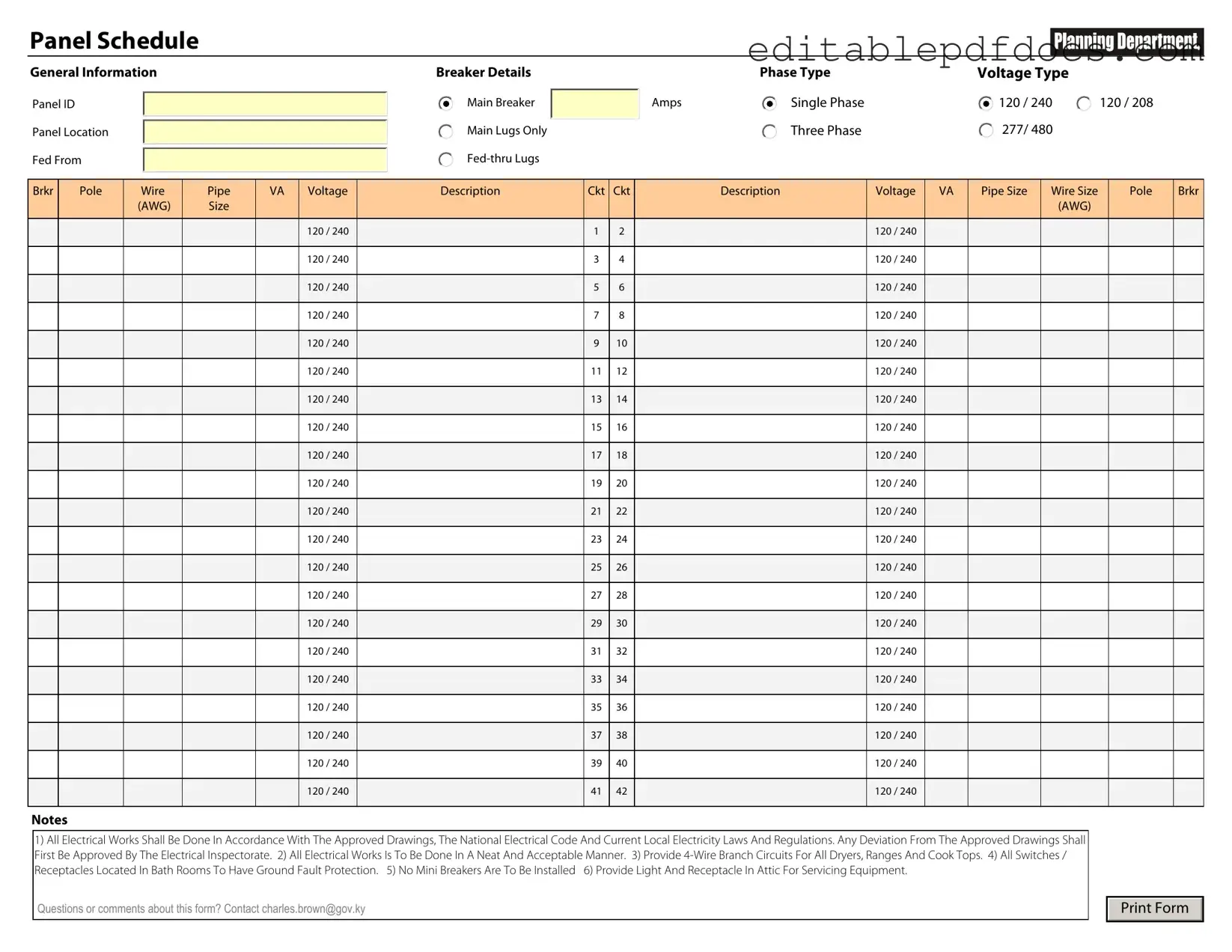The Electrical Panel Schedule form plays a crucial role in the management and organization of electrical systems within residential, commercial, and industrial settings. This form serves as a detailed inventory of the circuits connected to a specific electrical panel, providing essential information such as circuit numbers, load capacities, and the devices or areas each circuit powers. By clearly outlining the distribution of electrical loads, the schedule helps ensure safety and efficiency in electrical usage. It also aids electricians and engineers in troubleshooting issues, planning upgrades, and performing maintenance. Moreover, the form often includes critical details about the main service disconnect, grounding systems, and any special considerations for specific equipment. Understanding and utilizing the Electrical Panel Schedule is vital for anyone involved in electrical work, as it promotes compliance with safety standards and facilitates effective energy management.
